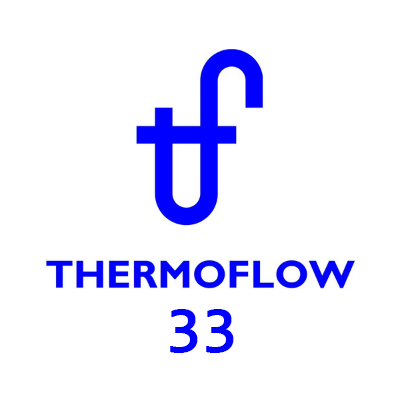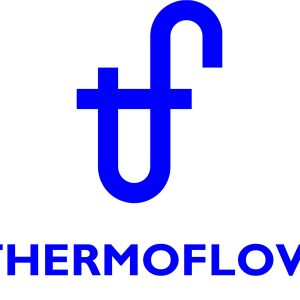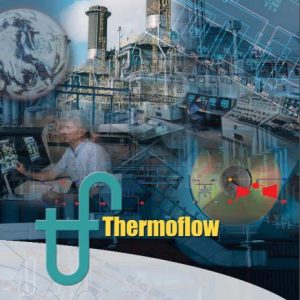Thermoflow Suite 33 (TFLOW33)
$ 160.00
Thermoflow – Advanced Power Plant Simulation & Thermal System Analysis Software
Optimize power plant performance with Thermoflow, the leading simulation software for engineers. Model steam, gas, and combined-cycle power plants with precision, analyze efficiency, predict emissions, and design cost-effective thermal systems. Perfect for energy engineers, plant designers, and industrial professionals seeking reliable, industry-standard performance modeling tools…
Description
Thermoflow Version 33 – Advanced Power Plant Simulation & Thermal System Analysis Software
Thermoflow Version 33, released on April 15, 2025, is the latest, most powerful version of Thermoflow’s comprehensive engineering simulation software suite. Designed for power generation engineers, plant designers, and energy professionals, Thermoflow allows accurate modeling, performance evaluation, and optimization of steam, gas, combined-cycle, and renewable energy power plants. With Version 33, engineers can now take advantage of enhanced modeling capabilities, improved user interfaces, new modules for hydrogen and carbon capture applications, and updated market-based cost estimates, making it the ultimate tool for thermal system analysis and design.
🔥 Key Features & Highlights
1. Updated Cost Estimates Across All Programs
Thermoflow Version 33 includes updated cost models reflecting the latest market data, enabling engineers to produce accurate, realistic project cost estimates. This ensures financial planning aligns closely with real-world economics, improving decision-making for new and existing plants.
2. Enhanced User Interfaces
Several programs in the suite now feature modernized, user-friendly interfaces, making it easier than ever to navigate complex simulations. Users can quickly input data, view results, and generate detailed reports with fewer steps and reduced error potential.
3. PEACE Module Enhancements
The PEACE module in Version 33 offers improved market dispatch modeling and optimization for gas power plants. This allows engineers to simulate grid interactions, load balancing, and revenue projections in liberalized energy markets with unprecedented accuracy.
4. Hydrogen Power Applications
With Version 33, Thermoflow introduces expanded hydrogen simulation capabilities. Engineers can model hydrogen production processes such as steam methane reforming and electrolysis, analyze integration with renewable energy sources, and evaluate the efficiency and feasibility of hydrogen-based power plants.
5. Carbon Capture and Low-Emission Systems
Thermoflow now provides enhanced modeling of pre- and post-combustion carbon capture technologies, helping design cleaner, low-emission power plants. Engineers can optimize energy efficiency while minimizing environmental impact.
6. Advanced Thermal System Modeling
From boilers and turbines to heat exchangers and cooling systems, Thermoflow supports comprehensive thermodynamic simulations. Users can run “what-if” scenarios to maximize efficiency, minimize fuel consumption, and predict emissions under varied operating conditions.
7. Detailed Reporting and Analysis
Thermoflow generates extensive, customizable reports for efficiency, fuel consumption, emissions, and operating costs. Reports can be exported for regulatory compliance, investor presentations, or internal plant optimization projects.
🛠 System Requirements
-
Operating System: Windows 10 or 11 (32-bit or 64-bit)
-
Processor: Intel or AMD processor, 2.0 GHz or higher
-
Memory (RAM): Minimum 2 GB (4 GB or more recommended for large simulations)
-
Storage: At least 2 GB free disk space
-
Graphics: DirectX 9-compatible graphics card with 512 MB VRAM or higher
-
Additional Software: Autodesk Design Review (for graphical outputs), Microsoft .NET Framework
Note: Large-scale simulations, especially those involving combined-cycle or hydrogen systems, may require higher memory and CPU performance for optimal performance.
🐞 Bug Fixes & Stability Improvements
Thermoflow Version 33 addresses several bugs and performance issues identified in previous versions:
-
Optimized Simulation Performance: Reduced computation times for complex plant simulations.
-
Improved Stability: Fewer crashes and glitches during high-demand calculations.
-
Bug Fixes: Corrected minor errors in thermodynamic calculations and user interface inconsistencies.
-
Enhanced Compatibility: Better integration with Windows 10/11 updates and supporting software.
🌱 Who Should Use Thermoflow?
-
Power Plant Engineers – Model, simulate, and optimize plant performance.
-
Energy Consultants – Provide accurate financial and efficiency projections.
-
Researchers & Academia – Analyze advanced energy systems and emerging technologies.
-
Industrial Plant Designers – Integrate thermal systems and renewable energy options.
Thermoflow Version 33 is trusted worldwide as the industry standard for thermal system analysis and power plant simulation, enabling professionals to design more efficient, sustainable, and cost-effective energy systems.
✅ Why Choose Thermoflow Version 33?
-
Industry-leading accuracy in thermal system modeling
-
Optimized workflows for faster, simpler simulations
-
Cutting-edge hydrogen and carbon capture capabilities
-
Comprehensive reports and analysis tools for engineers and consultants
-
Global recognition and reliability, with decades of continuous development
Boost your plant efficiency, minimize emissions, and maximize profitability with Thermoflow Version 33 – the ultimate engineering simulation software for modern energy systems.
⭐⭐⭐⭐⭐
“As a thermal systems engineer with over a decade of experience in power plant design, I’ve been using Thermoflow Version 33 for several months, and it has significantly streamlined my workflow. The software’s accurate power plant simulation capabilities allow me to model steam, gas, and combined-cycle systems with remarkable precision. I particularly appreciate the enhanced hydrogen and carbon capture modules, which make analyzing modern low-emission and renewable-integrated plants much more efficient.
The user-friendly interface and detailed reporting tools save countless hours on data entry and analysis, while the updated cost estimation features help ensure financial projections are realistic and actionable. I’ve also noticed improved stability and faster computation times, which make large-scale simulations more manageable.
Thermoflow remains the industry standard for thermal system analysis and power plant optimization, and I highly recommend it to any engineer or consultant working in the energy sector. It’s an indispensable tool for designing efficient, sustainable, and profitable power systems.”





